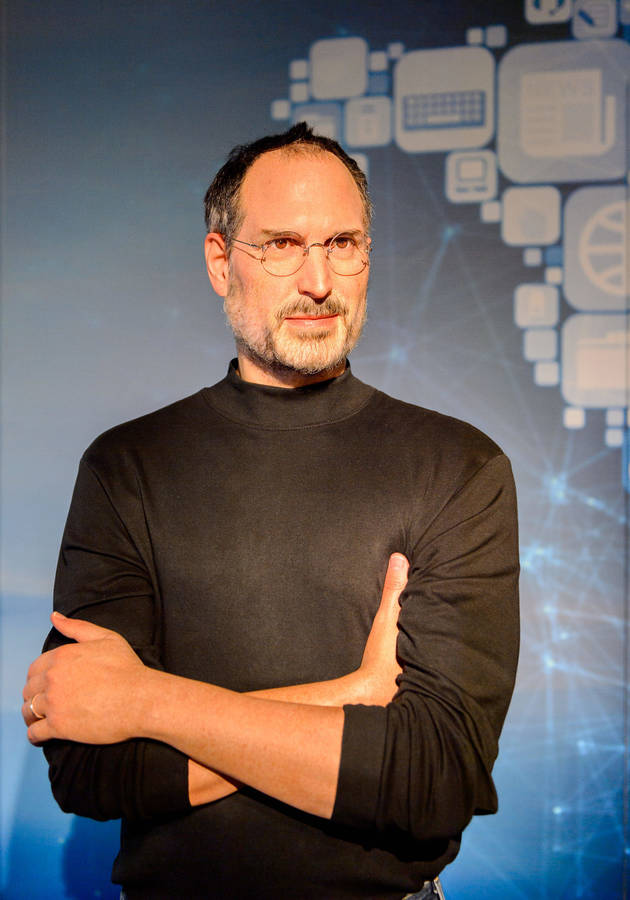In retrospect, 1971 was a marvelous year for humanity. Not because Steve Wozniak, a self-taught hardware engineer, built his very first computer with the help of a friend named Bill Fernandez – but because Bill Fernandez wanted to share this achievement with a fellow student. “You should meet him,” he said to Woz one day, “He likes electronics, and he also plays pranks.” Soon after, Bill showed up with Steve Jobs at Woz’s house. The rest, as they say, is history.
Written by Jay Elliot, former Senior Vice President of Apple Computers, The Steve Jobs Way is a first-hand witness account of that history, giving readers an opportunity to not only see Jobs through the eyes of one of his closest associates, but also to learn all about his uniquely transformative management style. So, get ready to discover what made Steve Jobs the IT guru and product czar of the 21st century, and how you can pattern yourself after him to become a competent iLeader for the next generation!
Passion for the product: the development of Apple Lisa
During his high school days, Steve Jobs was “so unruly and hard to handle” that, in his words, he could have been headed for jail. Instead, he ended up becoming “the world’s foremost CEO and product creator” – something no one, including his closest associates, could have predicted in the early days of Apple.
“And yet,” writes Elliot, “the man I saw when I first went to work with him certainly was determined and driven. And like all the great leaders I’d met and worked with, he had his own personal, nearly irrational focus – but it’s one that has made the world a better place. His obsession was a passion for the product… a passion for product perfection.”
At the time Elliot joined Apple, the company was working on what was supposed to be “a boundary-shattering product,” a computer that would come to be called the Apple Lisa. However, after an “apocalyptic” visit of Xerox's Palo Alto Research Center (PARC) in California, Steve Jobs realized that Lisa was actually a project stuck in the past, while Xerox was working on something for the future. How could he not? During that visit, Jobs saw, for the first time in his life, “a crude version of a device we’d later call a mouse, a computer printer, and a computer display that wasn’t limited to text and numbers but could show drawings and graphic images, and menu items you could select with the mouse.”
Unsurprisingly, he spent the following few weeks trying his best to persuade the engineers working on Lisa to alter their development plans and incorporate some of these aspects into the computer’s design. However, since Apple was a pretty loose organization at the time, he failed in his endeavor. Single-minded as ever, Jobs didn’t give up that easily: he started plotting how to get himself appointed as vice president of new product development. Instead, in an organizational reshuffling, he became Apple’s interim CEO, the company’s preferred frontman for the upcoming IPO of Apple stock.
Many people would have been jubilant at such an outcome, but Jobs was actually pretty hurt because this meant losing direct involvement with Apple Lisa. To make matters worse, John Couch, the new head of the Lisa group, added another nail in the coffin, telling Steve to stop harassing his engineers and back off for a while. Jobs had never found himself in a situation like this: accustomed to being “an idea-person and shaper of new products,” he was suddenly just a poster boy in a chair. He had seen the future of computing and there was nobody willing to hear him out. What now?
Steve Jobs: an innovator, a product czar, a UX pioneer
Well, Steve Jobs wasn’t a guy willing to take “no” from anyone, and he was habitually deaf to phrases like “We can’t,” or “You may not.” Now, after he had heard all of them from just about everybody at his own company, he realized that the only thing he could do was put faith in himself. So, he turned his attention to a project he had intended to kill not that long ago, since it was similar to the Apple Lisa and he didn’t want to build two competing products concurrently. But that had been before Couch slammed the doors to the Lisa project in his face.
Still in early development, this other machine already had a name: Macintosh, dubbed thus by the head of its engineer team, Jef Raskin, after his favorite brand of apple. Imagined as an “easy-to-use, inexpensive computer for the masses,” the Macintosh already existed in the form of a working prototype. Jobs, however, didn’t like many things about it. So, as always – almost immediately after joining the team – he started a major beef with Raskin over the model of interaction between the user and the computer. In Raskin’s view, the old way (via keyboard commands) was something everyone had gotten used to. Jobs, in contrast, believed that an external device tasked with controlling and moving an on-screen cursor was the better way – and the way of the future as well.
In the end, Jobs won the debate, and the Macintosh team started experimenting with different control devices and exploring the best ways to use the on-screen cursor for giving commands to the computer. During the following two years, they managed to develop everything considered fundamental about computers today. When it became available, Macintosh wasn’t just the first mass-market PC to feature an integral graphical user interface and a mouse, but also the first to introduce users to all of the basic types of mouse-interface interaction – from moving through dragging to clicking.
Throughout the process, the team was constantly spurred on and guided by Jobs’ “relentless insistence” on perfection, and his fanatical devotion to a personalized holy trinity of product design: simplicity, elegance, and intuitiveness. Elliot describes Jobs’ perfectionism by comparing him to an archetypal genius, Michelangelo, and saying that Steve would just keep adding brushstrokes to the canvas until he was certain he had it right. Just as well, he was interested in removing everything unnecessary and “uncool” even if that meant shipping the first Macintoshes without fans (that was a mistake, of course). Placing the user above everything, Jobs became proficient at discovering product flaws by putting himself in place of the product. “Okay, I’m the product,” he’d say to his development team from time to time. “What’s happening to me when the buyer tries to take me out of the box and start me up?”
Pirates of the Silicon Valley
Despite being a perfectionist to a fault – which, in his case, translated to being a domineering and authoritarian project manager – Steve Jobs was never a conventional leader. And he wanted to flaunt this idea in the face of the same people who didn’t allow him to take charge of the Lisa project. So, he treated the members of the Macintosh team as special employees of Apple, gifting all of them a T-shirt imprinted with what was to become their iconic logo: “Pirates! Not the Navy.” Jobs recognized these four words as a sort of rallying cry that would help unite a cohesive team against a common external enemy: the suppressors of innovation and creativity working within the same organization.
In addition to singling them out as special, Jobs also developed a more intimate relationship with the members of the Mac team by treating them with all kinds of gifts and rewards, ranging from medals for completing a complex task to specially assigned bonuses. The most memorable example, however, came after a weekly staff meeting on February 10, 1982, when Jobs decided that the signatures of the original Mac team members deserved to be etched on the inside of the cases of the first Macs. “Artists sign their work,” he said to Jay Elliot and rolled out a big piece of drafting paper. Even though buyers would never see the signatures inside the case, the very fact that they were there made the engineers proud – and that meant the world to them.
Apple went public two weeks before Christmas 1980 and sold 4.6 million shares in the first hour. By the end of the day, its IPO was heralded as the most successful in history. In a single day, Jobs became one of the world’s richest self-made men – something Steve prided himself in despite having no special interest in any other acquisitions but the few he already had. “I was worth a million dollars when I was twenty-three,” he liked to tell people, “ten million when I was twenty-four, and over two hundred million when I was twenty-five.”
The departure and the return of the prodigal son
While Jobs was developing the Mac computer, he recruited the president of PepsiCo, John Sculley, to take his place as the company’s CEO. A marketing expert, Sculley was almost as enthusiastic as Jobs about the new machine, so for almost a year, the two worked fantastically well together. That all culminated during the 1984 Super Bowl when Chiat\Day’s iconic Orwell-inspired and Ridley Scott-directed Mac ad was aired for the first time on TV. It memorably ended with the following promise: “On January 24th, Apple Computer will introduce Macintosh. And you’ll see why 1984 won’t be like 1984.”
Even though Apple’s board didn’t like (and almost killed off) the commercial, the 1984 ad was a great success – as was the Macintosh initially! Within the first one hundred days, Apple sold over 70,000 Macs, twenty thousand beyond the most optimistic estimates and even Jobs’ definition of “success.” But then came a steady decline, and suddenly sales stopped. The reason was twofold: first of all, the Macintosh didn’t have expansion slots for add-on devices, so no further money could be made from peripherals; more importantly, the computer was too intuitive, so retailers couldn’t make money by selling customer training.
In an attempt to change this, Sculley hired over two thousand people to sell Macs to corporations which were, traditionally, IBM customers. Jobs was very much against this strategy (the Macs were, after all, always imagined as personal computers), so Sculley proposed a plan to remove Jobs from his position as a leader of the Mac team and put him in charge of New Product Development, thus rendering him all but powerless. To counter this, Jobs developed a plan to get rid of Sculley and take over Apple. However, after the plan was leaked, on September 17, 1985, Jobs submitted a letter of resignation to the Apple Board, selling all but one share of his Apple stock.
Needless to say, it was Jobs who got the last laugh: Sculley’s plan didn’t pay off, and Apple completely lost its identity along the way. In the meantime, Jobs managed to build a new, successful computer company called NeXT, and bought Pixar, the digital graphics part of Lucasfilm. As a result of these developments, in 1993, Sculley was forced to resign, and just four years later, Steve Jobs triumphantly came back to Apple’s helm as part of the company’s agreement to buy NeXT. For anyone working at Apple at the time, there was no doubt whatsoever that it was the other way around: it was NeXT that had in fact bought Apple.
Emulating Jobs: on becoming Stevian
Steve Jobs returned to Apple in February 1997 and remained with the company until his death on October 5, 2011. During this time, he worked relentlessly to make Apple great again. And he did: he not only envisioned, but also presided over the perfection of the Mac and the creation of such iconic devices and apps as the iPod, the iPhone, the iPad, and iTunes. Throughout, he never strayed from several principles that everyone who wants to emulate Jobs should learn by heart – and practice by instinct:
- Be passionate about each project you work on.
- Be driven by an opportunity and create a product for it.
- Always be open to talent who can help.
- Do your best to make the product intuitive, so a user’s manual isn’t needed.
- Be really honest with yourself about your products.
- Ensure that the products represent you and your traits as a person.
- Work through your people and celebrate as a unit with every success.
- Keep innovating toward perfection.
- Don’t listen to people who say it can’t be done.
Final Notes
Almost hagiographic, The Steve Jobs Way fails to paint a three-dimensional portrait of the highly complex human being that was Jobs – but that was probably the price Jay Elliot had to pay to, excusably, glorify Jobs’ unique qualities as a leader.
Because of this, the book should please anyone who looks for a keen analysis of Jobs’ management skills and practices, but those who want to learn more about Steve himself could find the book a bit wanting.
12min Tip
Be driven and determined, and always innovate toward perfection. Whatever they tell you, more often than not, perfectionism is not a flaw. It’s just burdensome.





























